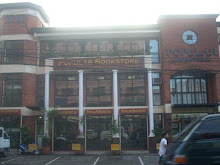This book was written as a tribute to our native trees and to encourage their use. By using native trees in our urban areas where half of our people dwell, we bring to the attention and appreciation of Filipinos the beauty and bounty of our natural heritage. Since not everyone may have the chance to visit our trees in their natural wild settings, living with them in our cities is the next best thing. By surrounding ourselves with our brother trees, sister flowers, cousin butterflies and all other Pinoy relatives, we ensure their continued existence and actually, the richness of our own.
The Philippines is universally viewed as a country that has an unmatchable variety of flora and fauna. This is the consensus among scientists using different formulas for determining biodiversity index. This belief is shared by plant hobbyists and definitely, by those who live close to nature and use its many gifts for their needs. Per hectare our country probably harbors more species than any other place on Earth. The Philippines boasts of 3,600 identified native trees. Of these, 67% are endemic, found only in our archipelago.
--From the PREFACE by Angelina P. Galang, Ph.D., President, Green Convergence for Safe Food, Healthy Environment and Sustainable Economy
PHILIPPINE NATIVE TREES 101 is a joint project of Green Convergence for Safe Food, Healthy Environment and Sustainable Economy, Hortica Filipina Foundation, Inc., and The BINHI Project of the Energy Development Corporation
Philippine Fermented Foods by Pricilla Chinte-Sanchez
From the Preface
Fermented foods are essential components of people's diets in many parts of the world, especially in Asia. Primitive sour milk and cheese were produced in Mesopotamia in 6000 BC (Hosono 1997), while wine was drunk as early as 4000 BC (Nojiro 1988). It is believed that production and preservation of foods utilizing fermentation were diffused into the lives of ancient people (Kozaki et al. 1998). Records have shown that most of the ancient fermented foods originated in Central Asia, then slowly spread to China, Europe, and other parts of the world...
Fermented foods are essential components of people's diets in many parts of the world, especially in Asia. Primitive sour milk and cheese were produced in Mesopotamia in 6000 BC (Hosono 1997), while wine was drunk as early as 4000 BC (Nojiro 1988). It is believed that production and preservation of foods utilizing fermentation were diffused into the lives of ancient people (Kozaki et al. 1998). Records have shown that most of the ancient fermented foods originated in Central Asia, then slowly spread to China, Europe, and other parts of the world...
The Archeology of Central Philippines, rev ed. by Wilhelm Solheim, II
 The Archeology of Central Philippines, rev ed. by Wilhelm Solheim, II. From the Preface... There are at least two good reasons for a Revised Edition of this book. First, it has been out of print for a number of years and second-hand copies are hard to come by. If only to make available again the considerable body of data to those who need it, a second edition is worthwhile. In ordering the data, most of which are concerned with earthenware pottery, four different pottery complexes were proposed. These pottery complexes have stood the test of time and survived new data. However, there has been considerable evolution in the concepts of two of the more important complexes and this evolution should be brought up to date. What better place to bring these up to date than in the context of their original presentation...
The Archeology of Central Philippines, rev ed. by Wilhelm Solheim, II. From the Preface... There are at least two good reasons for a Revised Edition of this book. First, it has been out of print for a number of years and second-hand copies are hard to come by. If only to make available again the considerable body of data to those who need it, a second edition is worthwhile. In ordering the data, most of which are concerned with earthenware pottery, four different pottery complexes were proposed. These pottery complexes have stood the test of time and survived new data. However, there has been considerable evolution in the concepts of two of the more important complexes and this evolution should be brought up to date. What better place to bring these up to date than in the context of their original presentation...GEOTECHNICAL HAZARDS: Nature, Assessment and Mitigation
GEOTECHNICAL HAZARDS: Nature, Assessment and Mitigation by Rolando P. Orense. From the Foreword. Each year, natural disasters due to geologic characteristics and processes cause countless deaths and extensive damage to infrastructure and the environment the world over.… Natural disaster reduction has been highlighted during the last decade with the International Decade on Natural Disaster Reduction (IDNDR). There is a new initiative called International Strategy on Disaster Reduction (ISDR), a global framework established within the United Nations for the promotion of action to reduce social vulnerability and risks of natural hazards and related technological and environmental disasters. It aims to increase public awareness on disaster reduction and to stimulate interdisciplinary and intersectoral partnerships that can improve the scientific knowledge on natural hazards and the causes of disasters.
Lexicon of Philippine Stratigraphy 2008
Kemistri ng Karbon
KEMISTRI NG KARBON: Maikling Kurso sa Paggamit at Pag-unawa ng mga Konsepto ng Kemistri ng Karbon... Pinagtibay at ipinatupad sa UP noong 1989 ang isang Patakarang Pangwika na nagtatakda na Filipino ang maging pangunahmg midyum ng pagtuturo... Pagkilala... ito sa katunayan na sariling wika ang higit na mabisang kasangkapan ng edukasyon; at ang edukasyon na ginagamitan ng wikang naiintindihan ng nakararami ay paghawan ng landas tungo sa katarungang panlipunan. Ngunit hindi sapat ang isang Patakarang Pangwika para palaganapin ang wikang Filipino sa akademya. Kailangan ang mga kagamitang panturo, lalo na ang mga teksbuk sa Filipino na magagamit ng mga guro at mag-aaral...
Subscribe to:
Comments (Atom)




